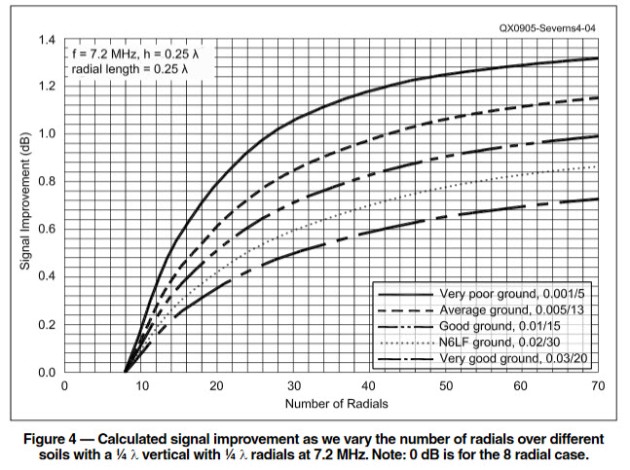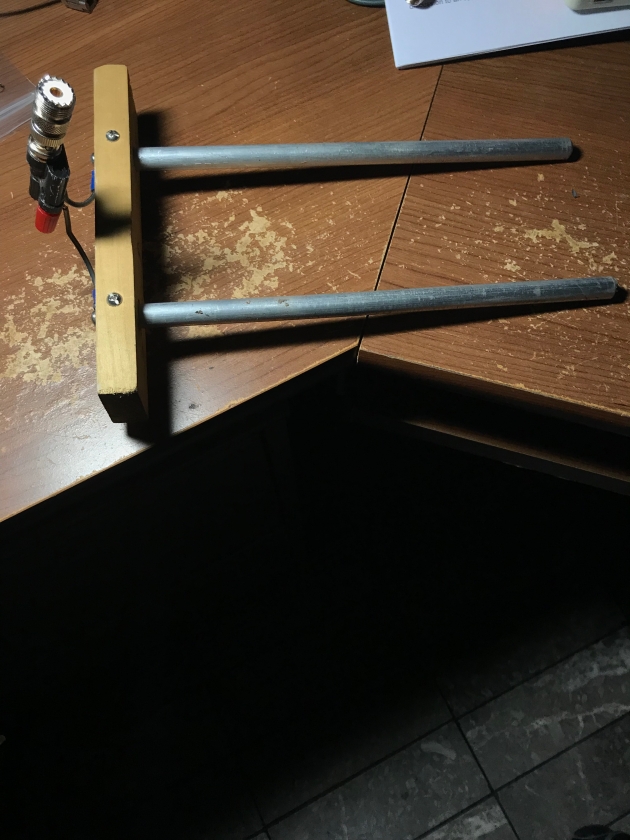Top Posts & Pages
- Field Day 2024 Wrap Up
- Multi-turn Magnetic Loop Antennas
- Setting Up Ham Clock on Raspberry Pi
- Camera Tripod Adapter
- Quick and Dirty 20-15-10m Inverted-V Fan Dipole
- Review of Mini60 Antenna Analyzer
- Thrust Bearing
- MX-P50M Amplifier for Yaesu FT-817ND
- RF Choke with Bifilar Windings - Done!
- A "Small" Magnetic Loop for 40m NVIS
Tags
1/4 wave vertical 2m Moxon 3D Printing 15m moxon 20m 20m half square 20m inverted V 20m inverted V beam 20m vertical beam 40m Amplifier Antenna Analyzer Antennas baofeng contest cq ww dx Creality CR-10S Creality ender 3 CW digital DX Ed Fong EFHW end fed vertical experiments eznec fan dipole Field Day Fishing Poles FT-8 FT-450D FT-817ND FT-2900R ham radio ham shack hexbeam HF Digital HF Portable High Voltage Variable Capacitor Homebrew Homebrew Buddipole Homebrew Buddistick IC-7100 ic-7300 JT-65 LiFePO4 Magnetic Loop Antenna Mini-whip RA0SMS Mini60 MX-P50M noise packet winlink PCB milling PETG Propagation QRP Raspberry Pi RFI RigExpert AA-230 Zoom rybakov s9v31 Satellite SDRplay solar generator solar power Spiderpole SSB trapped inverted-v dipole traps UHF Variable Capacitor VHF wsjt-x WSPR WSPR ChallengeArchives
- June 2024
- April 2024
- March 2024
- February 2024
- January 2024
- December 2023
- November 2023
- October 2023
- July 2023
- June 2023
- May 2023
- April 2023
- March 2023
- February 2023
- January 2023
- November 2022
- October 2022
- August 2022
- June 2022
- May 2022
- April 2022
- March 2022
- February 2022
- January 2022
- December 2021
- November 2021
- October 2021
- September 2021
- July 2021
- June 2021
- May 2021
- April 2021
- March 2021
- February 2021
- January 2021
- December 2020
- November 2020
- October 2020
- September 2020
- July 2020
- June 2020
- May 2020
- April 2020
- March 2020
- February 2020
- January 2020
- December 2019
- November 2019
- October 2019
- September 2019
- August 2019
- July 2019
- June 2019
- May 2019
- April 2019
- March 2019
- February 2019
- January 2019
- December 2018
- November 2018
- October 2018
- September 2018
- August 2018
- July 2018
- May 2018
- April 2018
- March 2018
- February 2018
- January 2018
- December 2017
- November 2017
- October 2017
- September 2017
- August 2017
- July 2017
- June 2017
- May 2017
- April 2017
- March 2017
- February 2017
- January 2017
- December 2016
- November 2016
- October 2016
- September 2016
- August 2016
- July 2016
- May 2016
- April 2016
- March 2016
- February 2016
- January 2016
- December 2015
- November 2015
- October 2015
- September 2015
- August 2015
- July 2015
- June 2015
- May 2015
- April 2015
- March 2015
- February 2015
- January 2015
- December 2014
- November 2014
- October 2014





